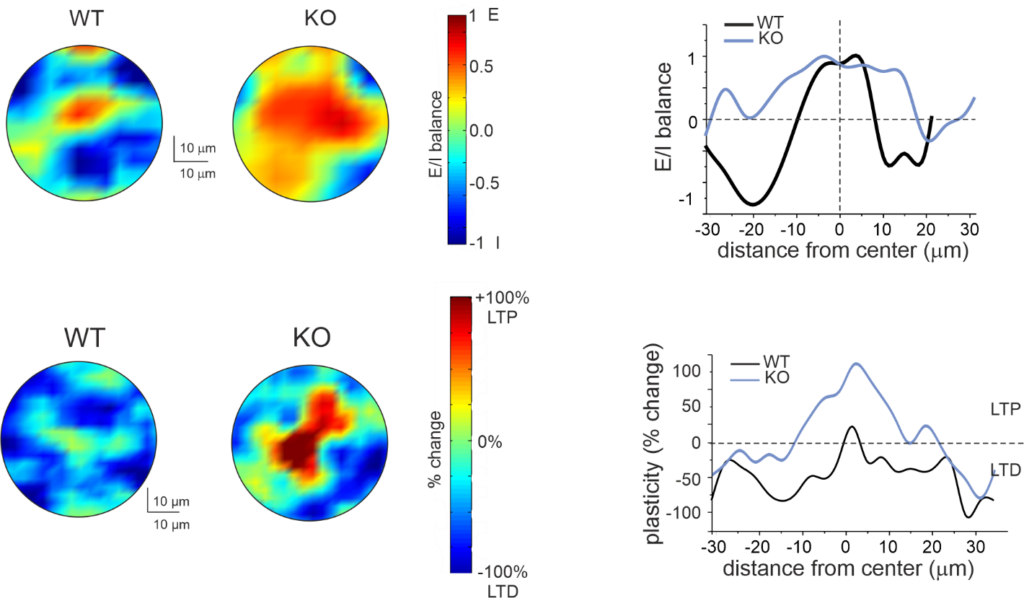Voltage sensors are molecules able to change their emission properties in response to changes of cells membrane potential, in a proportional way. This technique allows to obtain information on neuronal depolarization with high spatial and temporal resolution. This technique has been used to describe the spread of excitation in the cerebellar cortex after mossy fiber stimulation, in acute slices. Notably, VSDi allows to investigate complex network properties, as the spatial organization of the excitatory/inhibitory (E/I) balance and long-term plasticity in the cerebellar cortex in center-surround structures. In a recent work, we applied this technique to describe a complex set of cerebellar network activity modifications due to the IB2 gene deletion, in a mouse model of autism spectrum disorders (ASDs).
The figure shows the shift from a “classic” Mexican hat profile in the E/I spatial profile in the cerebellar granular layer, to the so-called stovepipe hat shape, a proposed functional abnormality in ASDs network functioning. A similar shift is present also in the spatial distribution of long-term potentiation (LTP) and depression (LTD). [From Soda et al., 2019].

